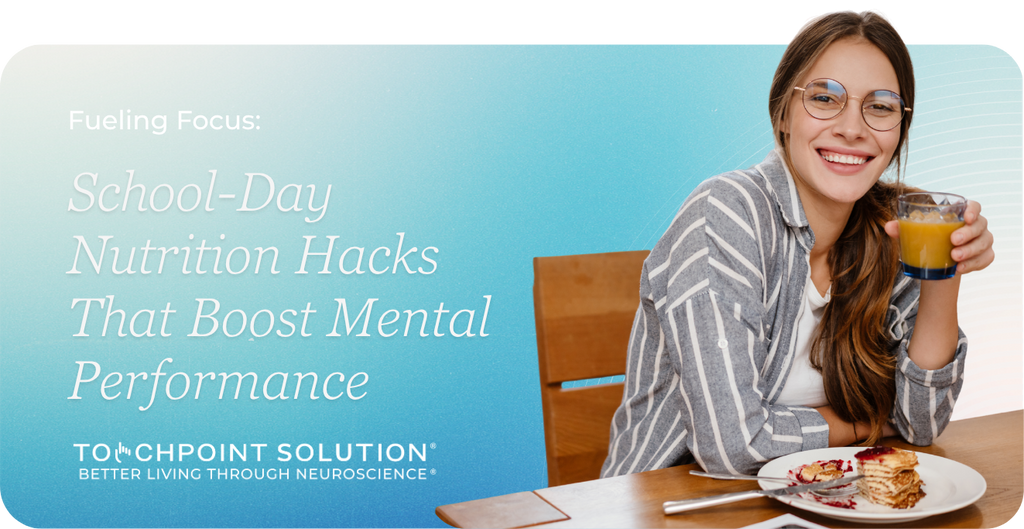Fueling Focus: School-Day Nutrition Hacks That Boost Mental Performance

What It Looks Like
It’s 3:00 p.m. and your kid is completely drained. Homework feels impossible, emotions are running high, and focus is lacking. Long gone. You start to wonder—did they even eat lunch? Was breakfast just a granola bar and a rushed sip of juice?
When we think of back-to-school prep, we usually focus on supplies, sleep routines, and screen time. However, one key element is often overlooked: nutrition. What kids eat and when they eat can have a significant impact on how they feel and function throughout the day.
Why It Happens
The brain uses more energy than any other organ, especially in growing children and teens. Without steady, nourishing fuel, it’s harder to focus, regulate emotions, or handle stress. Combine that with academic pressure, social dynamics, and digital distractions, and it’s easy to see how mental fog sets in.
For instance, a study found that school-aged children who ate diets rich in whole grains, healthy fats, fruits, and vegetables had larger brain volumes and better cognitive performance by age 10. This highlights how daily food choices can significantly impact focus and mental clarity.
On the other hand, skipping meals or reaching for ultra-processed snacks can cause blood sugar levels to spike and crash, leaving kids feeling sluggish, unfocused, and irritable.
What You Can Try
You don’t have to make every lunch from scratch or overhaul your pantry all at once. These simple shifts can help support better brain function and emotional balance:
Brain-Friendly Foods
- Healthy fats like avocado, nut butter, seeds, and fatty fish support focus and memory
- Complex carbohydrates such as oats, whole grain toast, sweet potatoes, and brown rice provide long-lasting energy
- Hydration through water with lemon, cucumber, or berries helps keep energy and clarity up
Easy Snack & Lunch Ideas
- Yogurt with granola and berries
- Cheese and whole grain crackers
- Apple slices with almond butter
- Hummus and veggie sticks
- Hard-boiled eggs and cherry tomatoes
Allowing kids to help pack or choose from healthy options helps build independence and encourages better eating habits.
Mindful Mealtime Habits
- Sit down for at least one screen-free meal each day
- Slow down and chew food thoroughly
- Talk about how food makes them feel, not just how it tastes
Where TouchPoints Fit In
TouchPoints aren’t just for big emotional moments. They’re also a valuable support tool during daily transitions, including meals.
Using TouchPoints at snack time or during family meals can help create a calming pause. The gentle vibrations help regulate the nervous system, making it easier to shift from high-stimulation school settings to a calmer, more mindful eating experience. This supports digestion, reduces stress, and helps kids tune into their body signals.
TouchPoints support several of the Six Dimensions of Health:
- Nutrition, by reinforcing calm, connected mealtimes
- Mindfulness, by encouraging presence during meals and snack breaks
- Healthy Thinking, by promoting self-awareness and emotional regulation before, during, and after eating
When nutritious meals are combined with simple self-regulation tools, families can create daily routines that support both physical health and mental well-being.
Small Shifts, Big Impact
You don’t need fancy recipes or rigid plans. Just a little more consistency, a bit of water, and a little more awareness can make a big difference in your child’s ability to focus and feel their best throughout the school day. Small shifts can have a significant impact.
Want to support your child’s focus and stress relief from breakfast to bedtime?
Shop TouchPoints and explore wearable stress relief that fits seamlessly into everyday routines, including mealtimes.
-
Posted in
focus, Mental Clarity, Nutrition, school stress




